The first step to building our Woodland Garden
Building your dream garden may start with planting a tree or your favourite shrub. For us it began by escaping our new-home subdivision and taking the leap to an older fixer-upper that provided us with the property we needed to start our dream Woodland garden.
Our woodland garden began with a pool in our neighbour’s backyard. We didn’t know it then, but life in a brand new home in the middle of the suburbs where late-night pool parties, loud teenagers and the never-ending drone of gas powered mowers was the norm, was enough to push my wife and I to extremes.
These weren’t our dreams – the pools, the parties the close proximity to neighbours.
So, it was time to sell and move into a home that, in the end was totally opposite to the one we were living in at the time.
A for-sale sign went up and before long we were in ‘our’ dream home. Well not exactly a dream home, more like a dream property. We only had one child, so my wife and I decided to go against the grain and buy a small house on a big property rather than a big house on a small property.
It was the best decision we ever made for our sanity.
In the end, we compromised a little and bought a small home (at least by 1980s standards) on a decent-size lot pushing a half acre. To say the home was a fixer-upper would be a bit of an understatement.
What does this all have to do with building a woodland garden, you ask?
Focus on the garden for long-term happiness
Our dream was never really to own a huge multi-level home. We realized we wanted to create a peaceful, natural area around us where we could enjoy nature rather than jumping in the car every weekend to go to cottage country to escape the neighbourhood noise.
The final selling factor, at least for me, was a photo album left on the table of the house left opened to a photo of a group of deer in the backyard of the very home we were touring. For many gardeners, this would be a deal breaker. For me it only made me want it more.
SOLD.
Building the woodland garden
Then the slow process of building the garden began in fits and starts. Not unlike the home, the garden, what little of it there was, needed a lot of work.
We brought in soil and mulch, planted trees and native wildflowers. Expanded the gardens and eliminated grass. Then eliminated more grass. Check out my post on the benefits of eliminating grass.
We brought in boulders, lugged hundreds of wheelbarrows of stone, pea gravel, mulch and soil into the backyard. Check out my post on the importance of using stone in the garden
My wife and I made paths, created dry-river beds in the front and the back and it continues to this day.
Check out my post on some of the DIY projects my wife and I tackled over the years.
Finally, more than 20 years later, the combination of time and a lot of hard work is turning our patch of rural suburbia into a woodland garden rather than a patch of grass surrounded by neighbouring patches of grass surrounded by forest.
Now, most mornings my dog, Holly, and I step outside on the patio and enjoy some peaceful time together before the neighbourhood wakes up.
Be sure to check out some of my other posts on putting together a woodland garden or natural garden. Ken Druse’s book The Natural Garden is a great place to start. His newer book The New Shade Garden is an excellent source of information. Or take a minutes to check out this post on the 5 best books for woodland gardening.
The birds are at home here. On any given morning, a young fox wanders through looking for breakfast and maybe a deer or two comes through and offers me a chance to photograph them before they are off for their daily adventure. I’ve watched skunks wander through the yard, rabbits, more chipmunks and red squirrels than I can count and even a lone coyote. Snakes have returned to the property after not seeing a single one for many years here. Toads, fireflies and a host of native bees and butterflies call our property home.
It’s taken a while to get here, and we know we will never be done. But we took that first step that needed to be taken.
Your first step might not be to sell your home, it might be to go out and plant your first tree, shrub or native wildflower.
So what are you waiting for? Take that first step. You never know where it will lead you.
Can I plant trees close to my house?
Creating a window into your low-maintenance Woodland Garden can be as simple as planting a tree or shrub up close to your favourite window to experience nature up close. Most gardeners have been happy to view their gardens from afar. Now is the time to consider landscaping our yards to bring our gardens indoors. Consider creating garden vignettes that incorporate a beautiful bird bath, a bird house or even better an elegant bird feeder, or water feature just outside your window for full-season interest and a window into your woodland.
Planting trees in close to your home and windows helps to give you a window into your woodland.
Trees planted close to windows create rooms with a view
You shouldn’t have to step outside to enjoy your Woodland and wildlife garden. By creating impressive views from inside your home, the garden and its wildlife always has a presence.
Whether it’s a full fledged Woodland that stretches out as far as the eye can see, or a smaller area in your garden, consider finding ways to welcome it into your home.
In winter, you’ll appreciate looking out at the birds flitting from branch to branch. In spring, you might be lucky enough to watch a pair of cardinals build a nest and raise their young.
There are plenty of ways to bring the outdoors in, but I find planting trees, shrubs, grasses, ground covers and flowers close to the windows in our one-storey house to be the best way to experience the woodland garden at all times.
Looking out and seeing birds in the branches just outside the window is such a pleasant experience compared to looking out over a sea of grass with gardens in the distance.
I also don’t worry about tree roots invading our basement. I am aware that this can and does occur at times – mostly in 100-plus year old homes with massive oak trees or maples planted very close to the home. By planting trees with less aggressive rooting systems, these problems can be averted.
A few good trees to plant near a home include birches, various forms of apple including crabapples, dogwoods, Japanese maples and hawthorn trees.
Trees to keep away from your home’s foundation include silver maple, poplars and white ash.
Our trees are far enough away that I am not concerned that they will ever get large enough to do any damage to the foundation of the home. Besides, I won’t probably be around by the time that occurs. In the meantime, I am going to enjoy feeling one with nature.
Getting up close and personal
There are many ways to get up close and personal with nature.
Some involve constructing outdoor structures … or building expensive three- and four-season rooms that reach into your garden and surround you with your woodland in a climate-controlled, mosquito-free environment.
Perfect, but often very pricey.
It’s a whole lot easier and much less expensive to simply take advantage of what’s already staring you in the face.
Existing windows and doors are an opportunity many gardeners overlook when it comes to maximizing their gardens. It’s not enough to simply look out over the garden, try to bring the woodland in close to give you an intimate window into the goings on in your garden. Birds flitting from branch to branch or a mother feeding her young just on the other side of the window provides all the entertainment you need over your morning coffee, breakfast, lunch and dinner.
Create vignettes outside your windows
Similar to indoor decorating, look to create vignettes on the outside that you can appreciate from inside.
French doors, for example, provide the perfect opportunity to create a beautiful vignette just outside the doors.
Outside our family room French door is a beautiful copper birdbath, a small concrete bench, a container full of annual flowers as well as a beautiful flowering Cornus Kousa. A small flagstone pathway gives the viewers’ eyes a view past a rose bush and into the main garden.
From the couch in the family room, I can watch a steady procession of birds at the birdbath and admire the beautiful view of the flowering dogwood. In winter the birdbath is heated to continue to provide entertainment while giving the birds vital fresh water and a bathing opportunity even in the dead of winter.
In your garden, it may be nothing more than a grouping of pots filled with colourful plants or dramatic grasses, garden art or a simple bird bath, or water feature that you can appreciate from both indoors and out.
Five ways to bring the Woodland inside:
• Spend time standing at or looking out the windows of your home in every season and dream of what you might want to view. Then make it happen
• Plant trees or clumps of trees close to your home outside windows and doors to give you intimate views of nature from inside your home.
• Plan a lovely vignette outside your favourite window.
• If you have a window overlooking a neighbour, consider planting cedars. Make sure they are either native white cedar, black cedar or a cultivar that is loose and natural feeling. Some of the cedars sold at nurseries are more ornamental and not really the best for hedging. The best cedars grow taller than a fence, provide year-round interest and attract birds both as nesting areas and food sources. Hang a small feeder nearby for even more entertainment.
• If you need new windows or doors, take advantage of the opportunity by either increasing the amount of glazing (glass) or using a French door or sliders over a standard door. Maximize your view and then create the view you dream of through landscaping.
Wise words from a professional landscaper
A landscape professional once told me that a good landscape allows people to live in it not just admire it from afar.
It’s an approach we all need to consider more carefully when we create our landscapes. Planting trees or shrubs close to windows and places where we spend the most time is a sure fire way to fully experience our gardens.
Natural tree canopies replace umbrellas
Why use a massive garden umbrella to give you shade from the afternoon sun, when a large tree canopy can do it with greater style? Plant that tree now and by the time it provides you with the canopy you desire, your existing umbrella will need replacing.
We are lucky enough to have large windows in both the front and back of our ranch-style home. In addition, to open the garden up even more, every exterior door has been converted to either have a large window or turned into a French door for maximum viewing.
To some extent, our gardens are designed around the windows.
Our large front picture windows look out onto a grassless woodland setting that includes, among other plants and trees, Japanese maples, a lovely serviceberry, fully mature Crimson and red maples as well as our neighbour’s large blue spruce trees.
But it’s our view out into the back garden that best illustrates our attempt to bring the Woodland indoors.
Creating a view: Designing a dry-river bed
After years of looking out a large dining room bay window into our back garden, it donned on me that we really needed to create an interesting view that we could appreciate year round.
The view had always begged for something special, but I could never decide how best to use the space.
Over the years, it primarily served as our main bird- and deer-feeding stations. The birds and deer provided plenty of entertainment, but it was time for a change.
Although it was completed just three years ago, it’s fair to say this project was years in the making.
It began with a plan to create a dry-river bed that connected to an existing pathway of river rock, pea gravel and flagstone stepping stones – a landscaping project my wife and I completed many years earlier. I liked the look and feel of the existing pathway and thought it would be good to bring that same feeling out into the landscape.
Since a bubbling rock has always been a dream of mine, we incorporated a small solar powered pump with a bubbling rock at the head of the dry-river bed. The idea was coming together in my mind but it needed more to make it look natural and bring it together as a cohesive landscape.
Eventually, after combing Pinterest for dry-river ideas, the concept of a bubbling rock and dry river bed running through a forest of birch trees was born.
Soon after, three clump birches were planted in the area around where the dry river bed would eventually go. The bubbling rock and dry river bed followed.
Grasses, ground covers and native flowers have been added since then to soften the hard edge of the river bed rocks and, three years later, the entire project is beginning to settle nicely into the landscape.
The birches seem happy and the branches are growing together creating a lovely birch-grove canopy over the bubbling rock and dry river bed.
Together, the tree canopy and fresh moving water attract plenty of birds, chipmunks and red squirrels that come in for a taste of the cool water rising up from the underground and spilling over the rock into the river rock below. I have even seen toads and snakes visiting the area.
Add solar lights for night views
At night, three solar-powered spotlights on the birch clumps allow us to enjoy our birch grove at all times, whether we are sitting outside or inside at the dining room table.
In fact, the lighted birch grove is the last thing I see every night and never fails to bring a smile to my face.
Now is the perfect time to consider creating vignettes outside your windows and doors to bring your Woodland garden into your home. I guarantee it’ll bring a smile to your face every day.
I would love to hear from you on how you were able to take advantage of existing windows and doors to create a dream view.
Take a few minutes to share your thoughts down below and inspire others to bring their Woodland indoors.
This page contains affiliate links. If you purchase a product through one of them, I will receive a commission (at no additional cost to you) I try to only endorse products I have either used, have complete confidence in, or have experience with the manufacturer. Thank you for your support.
Raised planters are a hit in the woodland garden
Living with deer is a wonderful experience. Everyday I see them browsing through the yard is both a joy and a horror. What are they after today? Will the prized hostas survive this time around? So, why not serve them a delicious smorgasbord right at the perfect eating height. We decided to experiment with veggies and herbs this year in raised planters. I know the rabbits can’t get them but I have a feeling the deer are going to thank me big time. Follow along this summer and see if the deer get more produce than I do from our raised-planter experiment.
From veggies to garden nursery, changing strategies
The two raised planters to the left in the photo fit in nicely with the Keter sheds (that’s a second, smaller shed on the right) and the two on-ground planters, also made by Keter, that flank each side of the shed doors.
We bought our home based on a picture the previous owners left on the kitchen table at the open house.
It was a picture of two deer walking through the yard.
That sold it for me.
At the time, my wife, daughter and I were living in the suburbs surrounded by homes, pools and annoying neighbours. I spent my evenings and weekends in the nearby town of Ancaster (where we now live) trying to get photographs of deer. At that time, I was a little obsessed about getting photos of these lovely creatures.
Lots of deer: Careful what you wish for
When we bought the Ancaster home, one of the first projects I did was set up a bird-feeding station. It wasn’t long before the deer came to the bird feeders and it wasn’t long after that I came to the realization that if birds came to my feeders, I bet deer would come to feeders especially made for them.
I was right.
One morning I woke up to 17 deer in the yard waiting for me to go out and fill their feeder.
In fact, by about the third year of feeding the deer, they would be waiting for me when I returned from work around midnight.
For more suggestions and some of my favourite garden things, be sure to check out my Favourite Things post.
Five, six, eight would be in the yard gathered around the feeder. They were so used to me by that time that they would back off only about three feet when I approached them with their special feed of oats and corn.
They became so friendly that I’m sure they would have let me touch them, if I ever tried.
It got to the point where we couldn’t sit outside without being visited by a couple of deer looking for a handout.
The two raised planters are seen here with the woodland garden in the background.
High cost of feeding deer
Eventually, I realized, however, that we could not have anything nice because of the all the deer.
Not only were they eating me out of house and home, but they treated my emerging garden like a smorgasbord – the garden was the salad and the feeder became the main course.
A number of on-line nurseries offer assistance on buying deer-resistant plants. They are worth familiarizing yourself with so you don’t spend a fortune feeding the deer with precious plants.
The Burpee site is another mail-order company offering an extensive list of deer-resistant perennial seeds and plants for purchase through mail order.
I cut down on the food and eventually fewer deer visited looking for handouts.
Don’t get me wrong, they are still welcome in my garden and continue to indulge on our hostas, but the tradeoff of having these magnificent animals around is well worth it to me.
Before I plant anything these days, I check to see if they are deer resistant. I’ll still use plants that I know deer enjoy, but I try to put them in areas that are a little difficult for the deer to reach. It doesn’t work, but I keep trying.
The Keter raised planter pictured here prior to being filled with soil shows the watering system at left and the plastic spacers that both give the unit support and act as dividers for different herbs or veggies.
Lots of visitors to the woodland wildlife garden
Deer, of course, are not the only garden visitors. Rabbits, groundhogs, squirrels (both grey and red) chipmunks and a host of other hungry visitors live here too. So the thought of growing vegetables had never really crossed my mind until recently.
Mary Reynolds’, The Garden Awakening, (see earlier blog) got me thinking about Forest Gardening. A little research on YouTube especially New Jersey YouTuber James Prigioni got me thinking maybe it was time to tackle a little more food cultivation in the garden.
Problem is, besides berries from the many Dogwoods on the property, crabapples, serviceberries and various nuts from trees, I was convinced vegetables and low-growing berry crops would not stand a chance in the garden. There are ways to keep the critters out but I was not interested in fencing my property.
Just fencing off a small area using something like the Pest Free Garden from Gardeners’ Supply Company would certainly get the job done.
But I decided to go with raised planters.
A quick visit to our local big-box store resulted in not one but two handsome black, self watering raised planters made by a company named Keter for a garden area I am developing in front of a new shed. It didn’t hurt that the raised planters were made by the same company that made the shed and, therefore, fit nicely into the grey and black colour scheme. Check out my review of the Keter shed here.
Simple to assemble raised planters
It also was not a coincidence that as soon as I saw the raised planters at Costco, I grabbed them. After purchasing more Keter garden products in the last year and a half than I care to admit, I knew the quality of these Keter Urban Bloomer XL raised planters would be top notch and assembly would be simple and satisfying.
Construction, however, didn’t start well.
I overlooked the instructions for the first planter in the box so, like most men, decided to proceed without them. First thing I did was break a tab off the leg trying to detach it from the packaging. I’m not all that handy, so breaking things before I even get started is not out of the ordinary.
I had three more legs to detach and, for the life of me, I could not figure out how to detach them without breaking them off. Second leg, same thing. Broken tab.
I knew Keter products well enough by now to know that this was not the norm with their products. Everything else I built from them (and like I said there were many) made Ikea look like amateurs.
It was about that time that I discovered the instructions in the box.
Well, guess what? The tabs were meant to be broken off from the packaging material. Wow, I thought to myself, not only do I get to build these things, but I even get to break things on purpose. Life is just too good.
A few minutes later and the first one was built. After already building one (without instructions for the most part), the second one went together even easier and quicker. Within 1/2 an hour or so, both were built and in place ready for soil and seeds.
Keter states that with The Urban Bloomer XL, there’s no need to dedicate lots of space to have a substantial vegetable garden.
And, for us old folks, no need to bend over while planting and harvesting our veggies. That’s a good thing.
The extra-large elevated planter ( capacity of 110 L | 29.06 Gallons) features a shelf for storing gardening supplies and a smart watering system that incorporates special fabric for evaporation and regulated watering.
Its 44.8 inches in length and 18.6 inches in depth provides plenty of space for planting vegetables and herbs. The planters are advertised as UV and weather resistant, requiring virtually no maintenance and are easy to clean. What more can you ask for? A drainage plug at the bottom of the planter provides a convenient way to reduce the amount of water if necessary.
They are also quite light even with soil in them and would make the perfect raised planter for a balcony or small courtyard.
Their dark colour makes them not only a stylish addition to a balcony or patio, but also works to absorb heat to keep plants happy from early Spring through the cooler Fall temperatures.
One thing I can say about Keter is that the vinyls/plastics they use in their products are outstanding.
I’ve always been a natural-materials guy, but when I discovered how realistic Keter products are, I was sold. In fact, the company has won awards for the vinyls they have created. I joke that our grey-weathered shed looks more like weathered cedar than real weathered cedar looks. And it was weathered the day we bought it. I didn’t have to wait for it to take on that beautiful weathered grey colour.
Will they work to keep deer away
Keter doesn’t say anything about deer though.
In fact, after assembling them, I realized that my planters are raised to the perfect height for our four-legged friends to chow down with the greatest of ease.
They will definitely keep the rabbits away but I’m not too sure about the deer.
Oh well, it wouldn’t be the first time I set up a buffet for our resident deer.
And, like I said, watching them enjoy my backyard as much as I do, is a small price to pay.
Just leave me a tomato or two would you guys… I do like my toasted tomatoes.
Throughout the summer, I’ll keep readers updated on my success and failures with my raised planters.
Raised planter update
Okay so after our first summer with the raised planters I can report that I did not see a deer munching my tomatoes. I can also report that the deer missed out because one of our local raccoons got there first. Turns out a local raccoon decided to help itself to the tomatoes and snap pees.
Back to square one. This year we moved the planters around to the side of the house and although I have not given up with the tomatoes and other veggies, I am converting the raised planters to more of a woodland wildlife nursery where I can begin growing woodland flowers and shrubs from cuttings and seeds. I predict that will be a little more productive in the long run.
I hope to pick up some garden cloches from Garden supply to deter the raccoons from what is left of my tomatoes and other veggies.
If you like Keter products, and you are as disorganized as I am, you might want to consider getting their shed tool organizer. Again it’s another high quality product that solves the problem of messy tools cluttering up your tidy shed.
• None of the products in this review were provided to me from Keter. They were all purchased by me at a local Big Box Store.
As an Amazon Associate I earn from qualifying purchases. This page contains affiliate links. If you purchase a product through one of them, I will receive a commission (at no additional cost to you) I only endorse products I have either used, have complete confidence in, or have experience with the manufacturer. Thank you for your support.
Building your Woodland: One Tree at a time
Dream of what your woodland garden can be and we will work together to make it real. By using native and non-native trees, plants and flowers, you can transform your garden into a wildlife haven. Then spend the day photographing the nature around you.
Woodland wildlife garden needs time to mature
A woodland garden can be as big or as small as you want. Start with a single tree in your yard and try to imagine what that tree can become.
Remember a woodland garden can take time to mature into perfection. Like a freshly-built home that lacks the layers living brings to it, a woodland needs that same time to develop the multiple living layers that make it the inviting place we want to experience. It too needs its spirit; one that starts deep in the soil and stretches high into the upper layers of the forest canopy. If you are just starting out developing your woodland garden design, the first rule to understand is that a woodland garden is all about layers. Three layers really, but you could argue four even six and still be correct.
It all starts with the upper canopy
The top layer, the upper-level canopy, is what builds the strength of the woodland over time. If you do it right, the middle layer is where much of the beauty resides. Then there is the shrub layer and finally the ground layer, also not without its share of beautiful things. The ground layer, appropriately made up of ground covers, forms a protective layer that encourages all that is above it to prosper.
Early morning offers a different experience in the Woodland for both photographers and dreamers. Get up early, catch the light, and sneak in an afternoon nap.
Maybe, if you are like me and bought into an older neighbourhood, you are already blessed with a mature tree or several that helps to create the critical upper canopy. If you are not blessed with any large trees on your site, that large maple growing in your neighbour’s yard casting its lovely shadow over your yard will do the trick too. Remember though, your neighbour could cut that tree down and your upper canopy can disappear in an afternoon. Better to plant your own as soon as possible as a backup to your grumpy neighbour’s tree.
This photo illustrates the layering of our mature woodland garden. A large locust and tulip tree form the upper canopy, while a mautre Cornus Kousa in full flower forms part of the mid-canopy. The kousa is joined by serviceberry, redbuds and Cornus Florida in the lower canopy of this area of the garden. Ostrich ferns fill in as the primary ground cover.
Large trees form the upper canopy
When we talk upper-level canopy, we’re talking the big boys of the tree world.
Think maples, locusts, lindens, oaks and a host of other native trees that will grow large enough to eventually tower over the garden.
If you live in the Carolinian zone (link to my post) or a similarly appropriate area and need a quick canopy, consider planting a couple of Tulip trees. They are fast-growing native trees, growing up to 35 metres tall. In fact, they are among the tallest and straightest trees in the forest. In fact, they were often the tree used as telephone poles because of their straight growth habits. Their canopy can be trimmed up high as they shoot to the sky, and the shade they throw is open enough to allow understorey plants to grow happily.
Tulip trees have a spectacular yellow-green 5 centimetre long spring blooming, tulip-shaped flowers. Although the fast-growing tree is not the best host of insects and caterpillars that provide food for birds, the seeds of the tulip tree grow every year and are a source of food for birds and small mammals.
Oaks are kings of biodiversity
If you are looking for the perfect tree to form your upper canopy, you would be hard pressed to do better than one of the mighty oaks. Consider planting an oak near your tulip trees where it will grow up to provide a future canopy after the tulip trees have served their immediate goal of providing a fast and effective canopy in the short-term.
What makes Oak trees so important?
As Douglas W. Tallamy explains in his book Bringing Nature Home: How you can sustain wildlife with Native Plants, (link to my review of the book) a single white oak tree can provide food and shelter for as many as “22 species of tiny leaf-tying and leaf-folding caterpillars.” These combined with all of the other “lepidopterans (moths and butterflies), heteropterans (true bugs), homopterans (aphids, plant hoppers,and scales), thysanopterans (thrips), orthopterans (katydids, grasshoppers, and crickets), … that develop on white oaks are considered s well, you can appreciate how important this one plant species is to the mintenance of biodiversity.
In fact, a single oak can support up to 534 different species and leads the list of important native trees providing biodiversity in our forests and woodlands.
In Tallamy’s list, The willow is second supporting 456 species followed by cherrry and plum (also 456); birch trees (413); poplar, cottonwood (368); crabapple (311), Maple, box elder (285), Elm (213); pine (203); Hickory (200); Hawthorn (159); spruce (156) …”
If attracting birds and creating a biodiversity of insects, caterpillars, moths and butterflies in your garden is important to you, I urge you to get Tallamy’s book and use it as a bible for creating your backyard landscape design.
Blessed with mature trees in our yard
When we bought our home here in southern Ontario some 25 years ago, my wife and I were blessed with several large trees on the property, including two lovely locust trees, a large linden and Austrian pine in the backyard and two large maples in the front yard of the property. Since then, more trees big and small (at last count 28) have joined the originals to help form the foundation of our woodland.
The understorey: Where the (real) fun starts
The middle layer is the one that can really shine in the woodland.
This is where you can introduce a myriad of flowering trees. Think flowering dogwoods, both the native variety (Cornus Florida) with a multiple of hybrids or the prolific Kousa Dogwoods that flower later in the season after the leaves appear on the branches. A combination of the two gives you a magnificent show from early spring into summer. Then, if you have room, intermingle a couple of Redbuds (link to my post on Redbuds) or Serviceberries between the dogwoods. Their ethereal flowers are absolute showstoppers in any garden big or small.
And, if that’s not enough, how about a couple of azaleas growing beneath the Dogwoods, Serviceberries and Redbuds. That’s a showstopper.
These are just a few ideas to think about while you contemplate your Woodland. Future posts will delve a little deeper into the different layers, so stay tuned. For example here is a post on three of my favourite groundcovers. Here is another post on a favourite groundcover for a hot dry location. This post looks into moss as a ground cover and plants that create a similar experience as moss in the garden.
I would love to hear some of your planting ideas for your top two layers your Woodlands. Share them with us below in the comment section.
This page contains affiliate links. I try to only endorse products I have either used, have complete confidence in, or have experience with the manufacturer. Thank you for your support.
Carolinian Canada is a diamond in the heart of Southern Ontario
Carolinian Canada is a sweep of land that extends from Toronto to Lake Erie and down through Windsor to Lake Huron. Its diversity of flora and fauna is unmatched anywhere else in Canada. The Carolinian forest also stretches through much of Eastern United States.
A Woodland Gardener’s journey of discovery
I am not sure when my love of gardening took root.
Two factors, however, played a major role in both my love of gardening and how I came to appreciate a Woodland Garden over, let’s say, a more formal style of gardening.
I was in my mid-twenties and working at a large weekly newspaper in the the metro Toronto area when I got my first real taste of the joy of gardening. I remember interviewing the president of the local garden club, touring his lovely suburban garden and sharing in his excitement for the diversity of flowers, shrubs and trees that grew in his garden. It definitely was not a Woodland garden but it left a big impression.
At the same time I was getting more and more involved in nature photography and my weekends were often spent wandering the local forests looking for wildflowers and other subjects that caught my eye. As my photographic knowledge grew, so did my appreciation for the more wild areas where I lived. Photographing trilliums, dog-toothed violets, hepatica, bloodroot and the ultimate photographic subject – native lady slipper orchids – became a spring ritual. In the summer months, our focus shifted to reptiles and mammals that seemed abundant in the ponds, rivers and forests that my photographic friends and I explored.
Fall, of course, was the magical time for Ontario photographers and nature lovers when the forests were blanketed with the spectacular reds, oranges, yellows and ambers of the season.
Carolinian Canada is an important ecosystem in Ontario that needs Woodland gardener’s assistance.
What I didn’t know at the time was that the driving force behind all of this was the fact I lived in one of the most beautiful, diverse and fascinating areas in Ontario. At the time it was just the forest. I later learned that it wasn’t “just a forest,” it was a very specific type of forest that made it special.
It was the Carolinian Canada forest.
Carolinian Canada is a rare gem
It’s a stretch of forest that sweeps from Lake Erie to Toronto, just kisses Guelph and Kitchener-Waterloo before heading up to Windsor and Lake Huron. Carolinian Canada boasts a diversity unmatched anywhere else in the country. From its unusual variety of trees to its rare plants, birds, mammals, insects, amphibians and reptiles, Carolinian Canada is certainly a nature lovers dream.
The Carolinian Canada forest is characterized by the predominance of deciduous trees and actually stretches well into the United States from the Carolinas, through the Virginias, Kentucky, Tennessee, Maryland, Delaware, Pennsylvania, parts of Ohio and New York state to name just a few. In the U.S., the Carolinian zone is commonly called the “Eastern Deciduous forest.”
Yellow lady slippers
Carolinian Canada includes primarily the gardening zones 6-7 and share many of the same fauna and flora.
Trees of note include hickory, oak, walnut, and the tallest of the lot, the tulip tree. In addition, there are the understory trees featuring native dogwood (cornus florida) and the pawpaw tree with it’s large, exotic fruit that tastes very similar to a mango.
In Southern Ontario the presence of the Great Lakes and their moderating influence creates the environment necessary to boast the longest frost-free seasons and the mildest winters of any region in the province.
The outstanding features of the Carolinian Forests in Ontario is also its downfall. The climate, fertile soils and proximity to large fresh-water lakes means that Carolinian Canada is highly developed and includes some of Canada’s most populated cities, intensively farmed agricultural areas and heavy industrialized locations. All this intensive settlement, industrialization and agriculture has led to significant habitat loss and fragmentation, leaving scattered and disconnected parcels of land left to carry on the natural ecology that makes up this important ecosystem.
The Natural Treasures of Carolinian Canada, published by James Lorimer& Company Ltd., is an outstanding resource for Woodland Gardeners who want to explore the Carolinian Canada forest more fully.
I was fortunate enough to be awarded this book as part of being recognized by the Hamilton Conservation Authority Watershed Stewardship Program for the efforts my wife and I have made on our property to care for the land in such a way to maintain a healthy state for today and for future generations. More on that in a later blog.
I took the time this winter to study this almost 150-page book. The book is edited by native plant expert Lorraine Johnson with individual chapters written by experts including naturalists and scientists working at World Wildlife Fund, the Nature Conservancy of Canada, The Royal Ontario Museum as well as many universities and government natural resources ministries.
It explores in great depth the various ecosystems within Carolinian Canada from the plants to the forests, the prairie peninsula and the wetlands. In chapter two, the authors focus on the fauna everything from badgers (yes there are badgers in Norfolk county) and flying squirrels to the birds, butterflies, amphibians and reptiles.
Finally, the authors turn their attention on stewardship and how humans can reshape the land and ecosystem they have played a major role in destroying, or at least bringing to the edge of distinction. These are important chapters; ones that, as Woodland gardeners, we have the opportunity to play a vital role in reshaping.
Woodland gardeners have a say in Carolinian Canada’s future
Whether we garden in a sensitive and highly threatened ecosystem like Carolinian Canada, a prairie grassland, the rolling hills of the mid-west or a desert landscape, all gardeners, but especially Woodland gardeners have the ability to influence the future of these important places.
Wherever you live and garden, there are organizations that work to protect the natural environment. Gardeners fortunate enough to live in Southern Ontario can take advantage of the vast resources and expertise that exists at Carolinian Canada, whose mission is to “advance a collaborative conservation strategy for healthy ecosystems in Ontario’s Carolinian Life Zone.”
The organization’s diverse network works to advance a “strategic ‘Big Picture’ vision for healthy landscapes and a green future in Canada’s deep south.”
Its website (see link above) states that since 1984, Carolinian Canada Coalition has been a leading ecoregional group, bringing together thousands of people and groups who care for the unique habitat network, and to support thriving wild and human communities in harmony for generations.
For our part, my wife and I do our best to plant native trees, shrubs and flowers, but we do not get too hung up on planting only natives. We try to plant fruit- and nut-bearing trees and plants to help local fauna. We put up bird houses on the property, have both above-ground bird baths and on-ground water sources for birds, amphibians and mammals and have a large debris pile to give mammals, reptiles and insects places to harbour over the winter. We have removed all the grass from our front yard and most of it from the back yard. (What’s left in the back yard is a combination of moss, wildflowers with a little lawn mixed in.) Chemicals are rarely used and branches, leaves and garden debris never leave the site.
Not everyone has the space or are willing to keep all the leaves and garden debris on-site, but if we all make an effort to do the best we can, we can play a significant role connecting these fragmented wilder areas and provide corridors for birds, mammals and flora to prosper even in some of the most built-up areas imaginable.
This concept is what Irish garden designer, naturalist and renowned author Mary Reynolds promotes with her gardening-inspired movement We Are the Ark and her book Garden Awakening, which was reviewed on this site in the previous blog.
Woodland gardeners have been building ARKs (Acts of Restorative Kindness) for years. Now we have a reason to celebrate our efforts and work to convince others to join us in celebrating the natural forests where we live.
More links to my articles on native plants
Why picking native wildflowers is wrong
Serviceberry the perfect native tree for the garden
The Mayapple: Native plant worth exploring
Three spring native wildflowers for the garden
A western source for native plants
Native plants source in Ontario
The Eastern columbine native plant for spring
Three native understory trees for Carolinian zone gardeners
Ecological gardening and native plants
Eastern White Pine is for the birds
Native viburnums are ideal to attract birds
The Carolinian Zone in Canada and the United States
Dogwoods for the woodland wildlife garden
Bringing Nature Home by Douglas Tellamy
A little Love for the Black-Eyed Susan
Native moss in our gardens
This page contains affiliate links. If you purchase a product through one of them, I will receive at commission (at no additional cost to you)I only endorse products I use, have complete confidence in or have experience with the manufacturer.
DIY: A solar drip for the birds
Converting a rarely used bird bath dripper into a solar powered fountain that is used daily, is a simple, DIY project that will please both the birds and the birdwatchers.
Turn a bird bath dripper into a solar-powered fountain birds will love
Birds love moving water and a drip, drop is about as good as it gets for them.
So, when I saw a nice copper bird bath dripper on Kijiji this spring, I jumped on it. The dripper was very high quality and I couldn’t pass it up. A copper drip tube attached to a lovely piece of slate with brass hose fittings.
It just doesn’t get any better than that.
Fast forward to this fall. Back on Kijiji looking for a cheap plastic bird bath to use this winter with an electric heater to provide water for our winged visitors throughout the freezing Southern Ontario winter, and … there it was. A magnificent copper bird bath for a very reasonable price. I remember saying to my wife that “someone in Toronto was going to get a great deal on a used copper bird bath.”
The converted dripper that operates as a solar-powered recirculating pump is certainly a treat for the Goldfinches in the garden.
The cheap plastic bird bath turned out to be an expensive copper one but I couldn’t be happier. The next morning I was on my way to Toronto (about a one-hour drive) to pick up the birdbath. To help justifiy the two-hour return trip, I combined it with a grocery delivery to my daughter who, it turned out, lived just 10 minutes from my prized bird bath.
Keeping an eye open for bird baths, bird houses and bird feeders on your favourite on-line used marketplace sites like Kijiji or Craigslist is a good way to get started with backyard birding or just to upgrade or add to your baths, houses and feeders.
Besides scoring the copper bird bath, I decided to do a slight hack on my already converted dripper to use it with the new bird bath.
For more suggestions and some of my favourite garden things, be sure to check out my Favourite Things post.
Although birds love drippers, the units need to be hooked up to a hose that needs to be left on while the amount of water is controlled to the point where just a drip at a time falls into the birdbath. Eventually, though, if left on and unattended, the bird bath overfills and drips over the edge potentially flooding an area.
I tried to make it work. I really did. Set up a nice deep bird bath that actually had a small leak. So it could handle the constant dripping without really overflowing. Trying to get the right flow was a pain and remembering to turn it off added to my frustration.
If only I could convert it to a recirculating dripper or even use it like a fountain.
Once I got the idea, it didn’t take long to convert the dripper to a solar powered unit. It’s no longer a “dripper” but that doesn’t matter because it is recirculating the water in the birdbath rather than adding to it.
The original dripper unit came with a very long, thin rubber hose that connected to the hose faucet. By cutting that into a short (maybe 6-inch) hose and connecting that to the pump’s outlet via one of the alternative fountain heads provided by the solar pump, the unit works even better than expected.
A robin takes a drink from the bird bath with the solar-powered fountain.
When the sun was out, it provided birds with a gentle flow of water recirculated from the bath itself.
This approach worked well but a small problem emerged. Trying to keep water levels high enough so that the small solar pump stayed below water became a daily concern.
The combination of birds using the bird bath, evaporation and some splashing caused by the fountain, created a daily water loss that meant constant monitoring of water levels. Everyday the water had to be topped up for fear of the bird bath running too low on water and potentially ruining the pump.
So, a small change to the original dripper conversion should work well with the new bird bath and its new location. By hiding a large bucket of water near the copper bird bath and sinking the solar pump to the bottom of the bucket, there is no fear of running the pump dry. On sunny days the bird bath will likely overflow a little but it’s placed in an area that does not get a full day of sun and will benefit from access water. A little overflow on sunny days will help to keep the water fresh and the bird bath full. In addition, I can’t help but think that it might be the perfect place to grow a thick carpet of moss around the birdbath where the access water will fall.
We set up the new bird bath and dripper/fountain right outside our family room French door to give us a window into the woodland and our keep an eye on the action at the bird bath. I’ll report back on how it’s working and how much the birds are loving it. It’s always a good idea to place feeders and bird baths so that you can watch them from inside your home. Read my blog on “A window into your woodland,” here.
I want to put a real plug in for these small, inexpensive solar-powered recirculating water pumps. This will be the third solar pump I’m using in the garden and I expect to put an order in for another one. There are so many uses for these small pumps. They come with a number of different fountain heads from a single stream of water to a gentle multi-stream fountain that would be perfect for hummingbirds who like to play in gentle streaming fountains.
A quick look on YouTube under “small solar fountain” turns up numerous DIY projects.
Definitely worth trying out.
For more on Building your Garden on a Budget, check out my earlier in-depth article here.
Consider installing a high-end, off-grid solar power system
If you are like me and don’t have electricity in your garden, or at least don’t have it in the far reaches of the garden, consider installing a complete off-grid solar-powered electrical system like the American-based Shop Solar Kit company.
Maybe you have a pergola in the back of the garden, or even a she-shed that you would like to have full power running a small refrigerator, sound system or full-size lamps and lighting. If you need to run pumps and lighting to a garden pond, you can do it with one of these highly capable systems that, once installed, operate at no cost to you at all.
There are complete DIY kits available for approximately $1,500 and up.
Gardening on a budget links
Ten money-saving tips for the weekend gardener
DIY Bark Butter feeder for Woodpeckers
DIY reflection pond for photography
Click & Grow is ideal for Native Plants from seed
Remove your turf and save money
Hiring students to get your garden in shape
If you are interested in backyard birds, please consider signing up for my backyard birds newsletter. The sign-up page is at the bottom of my homepage. Not only will the newsletter provide in-depth articles on attracting, feeding and photographing backyard birds, I am also working with local artisans to provide discounts on incredible bird-related feeders, houses and other goodies backyard birders will love. In addition there will be regular giveaways , including gardening books and birding items.

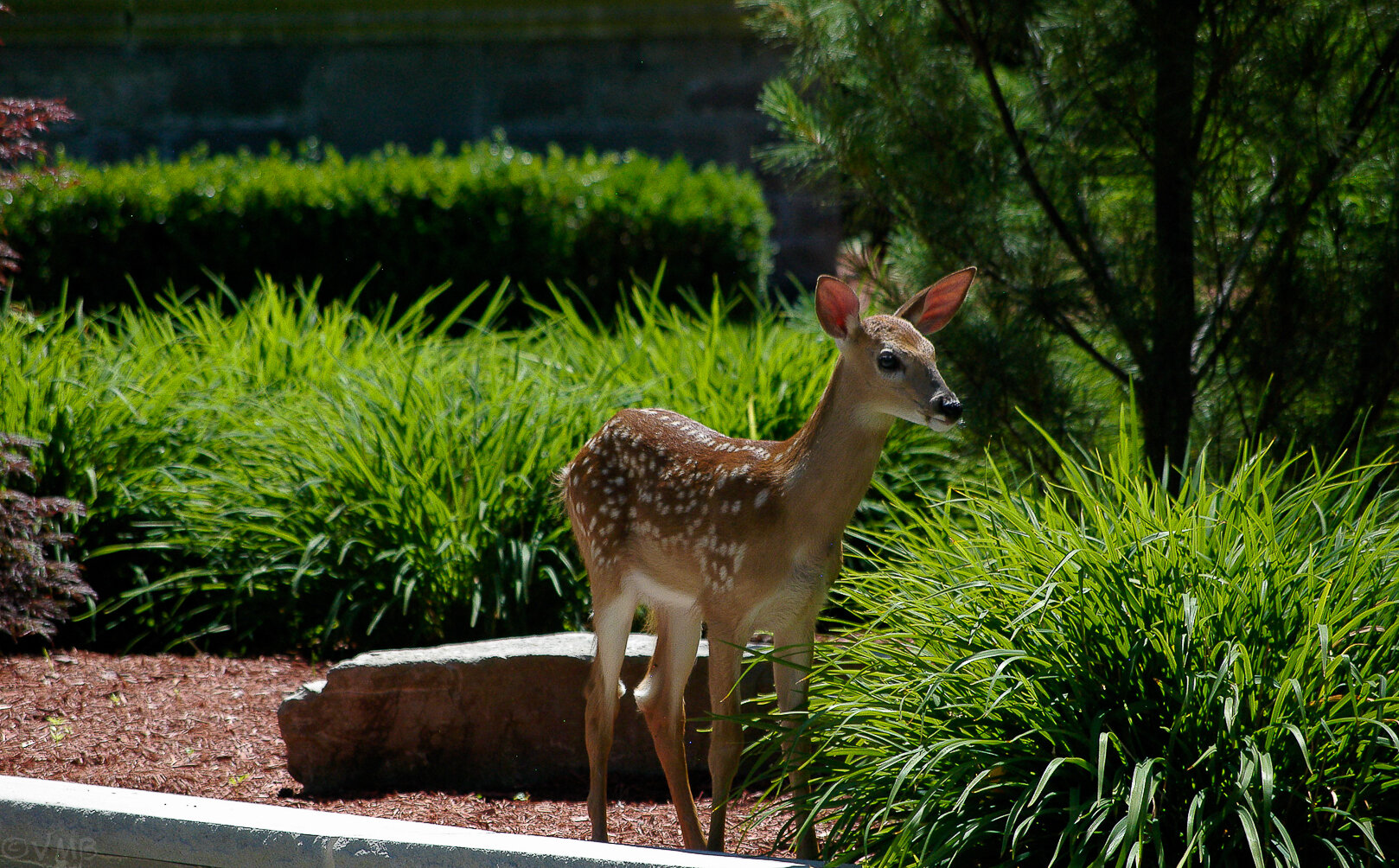
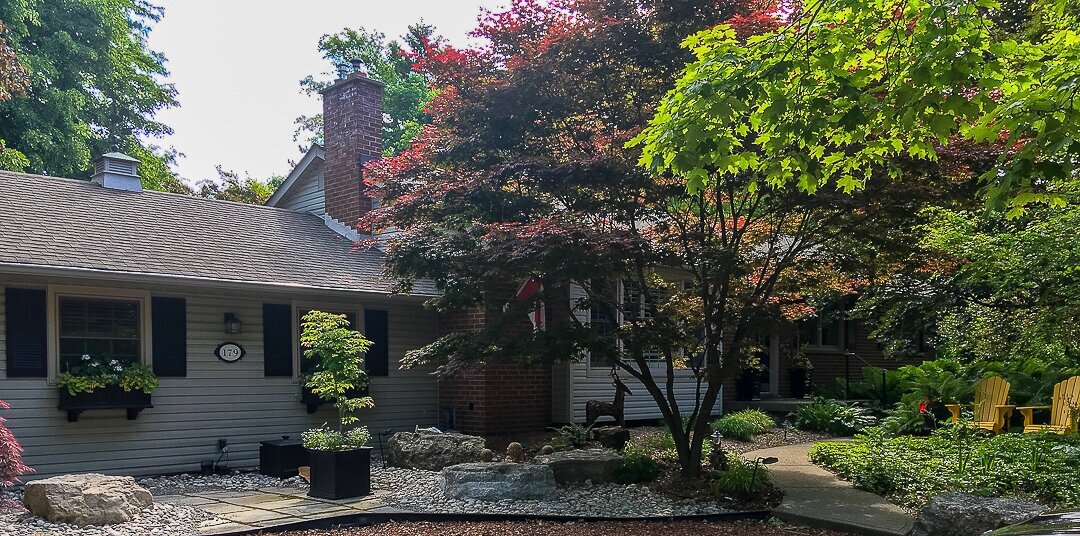
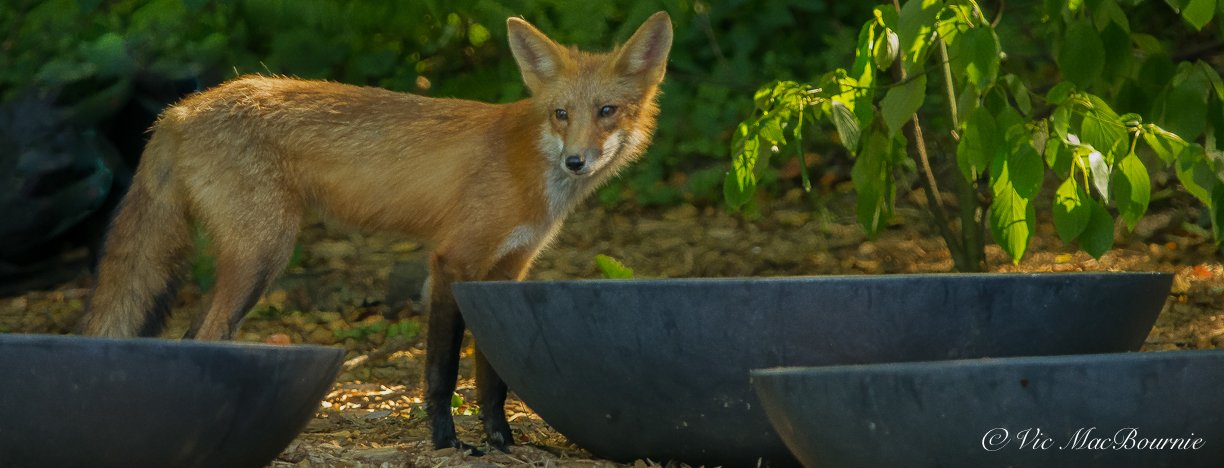


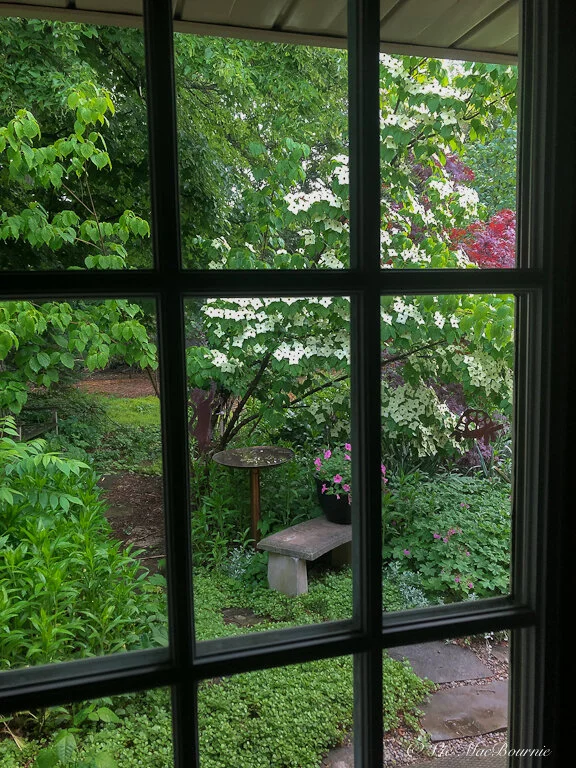
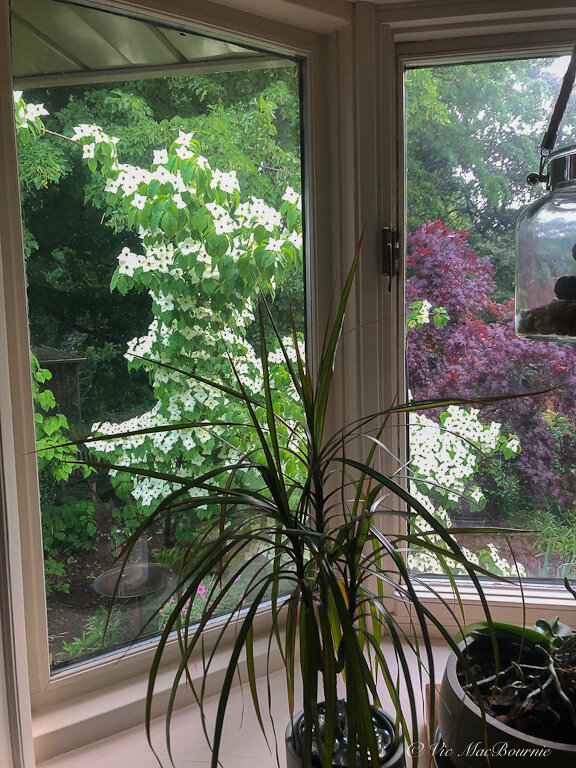
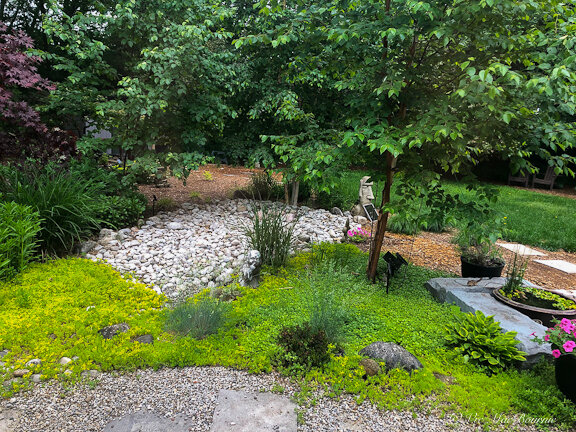
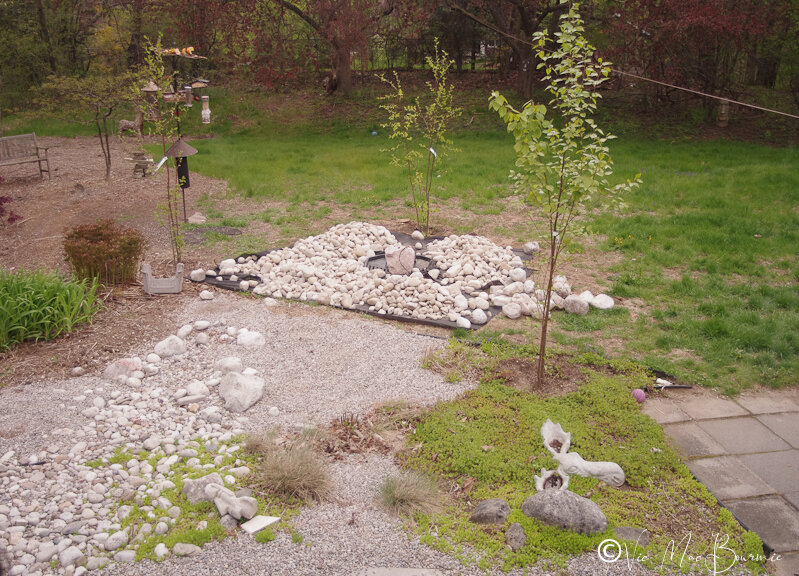
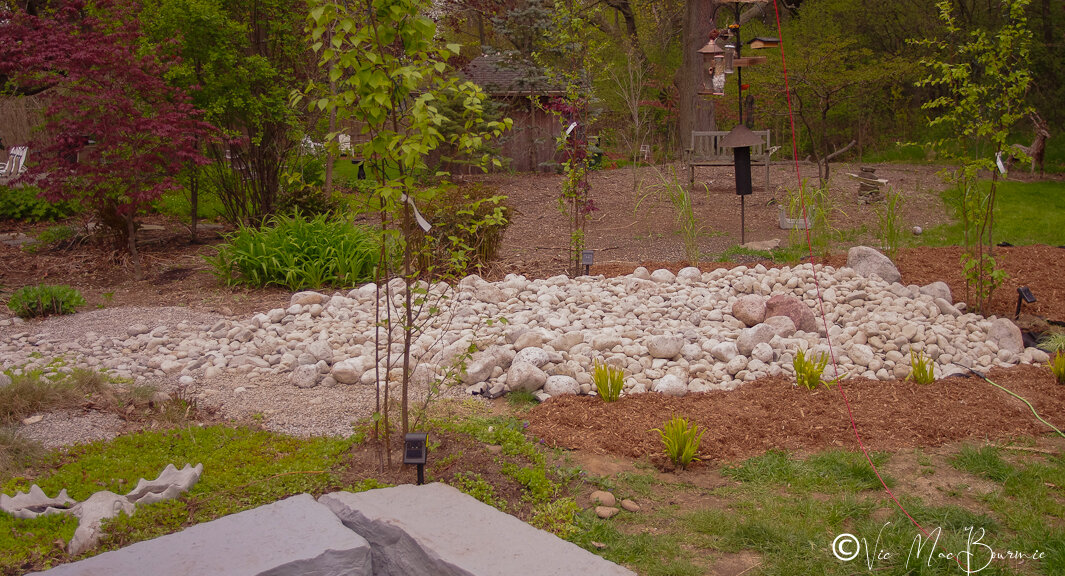
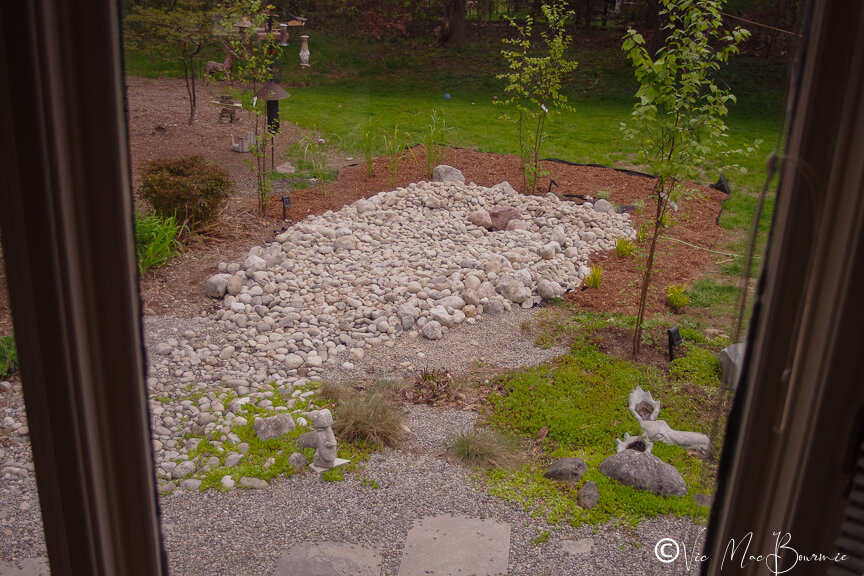
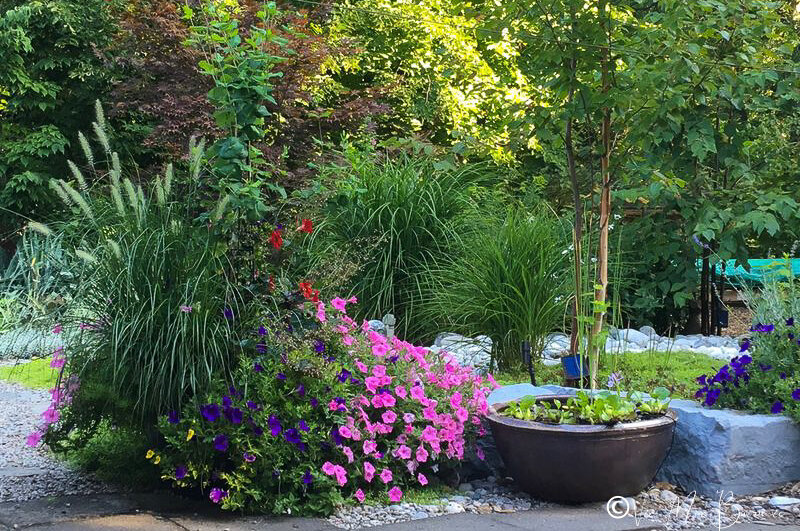



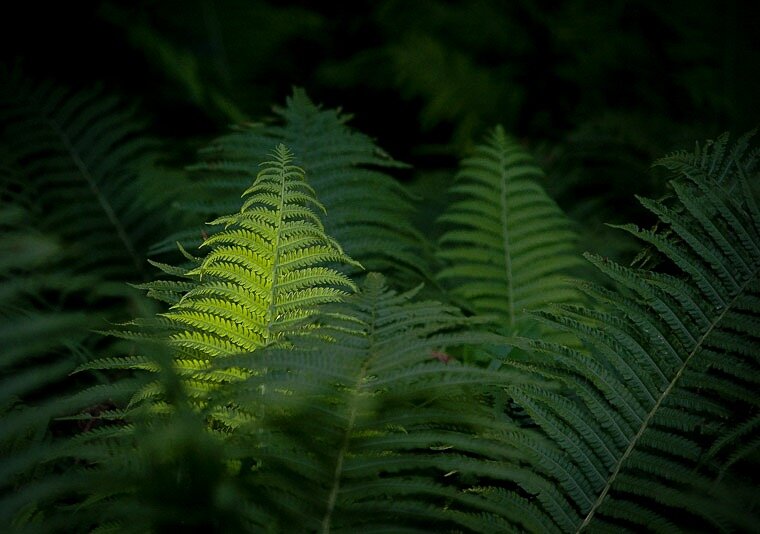


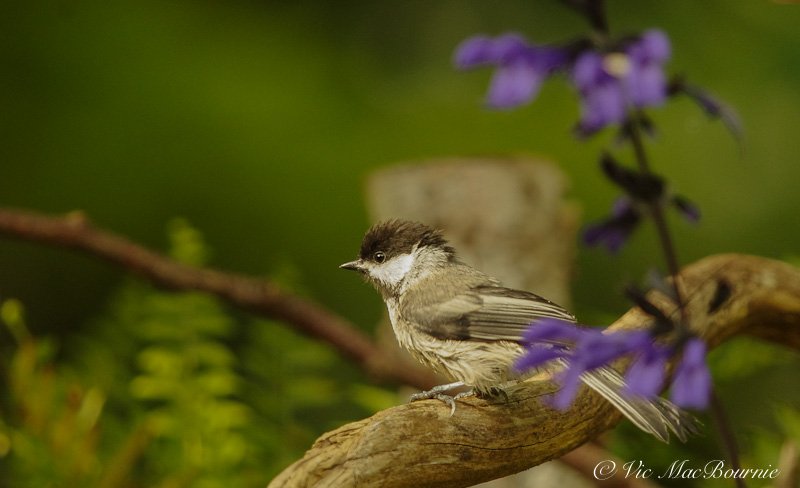









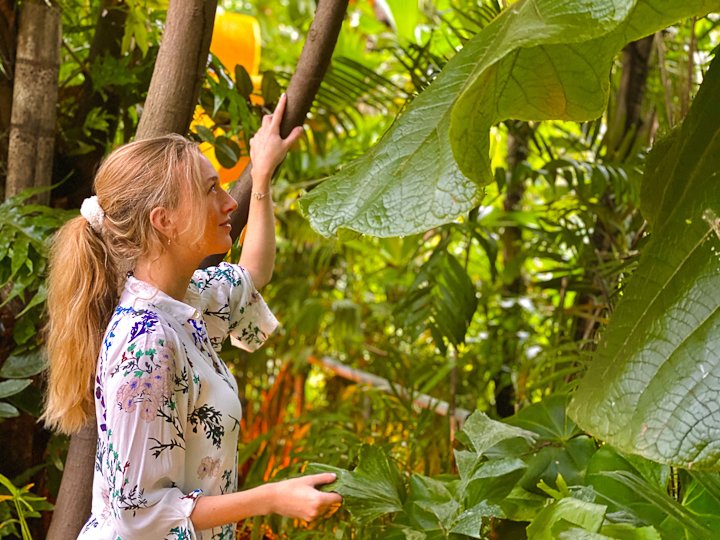



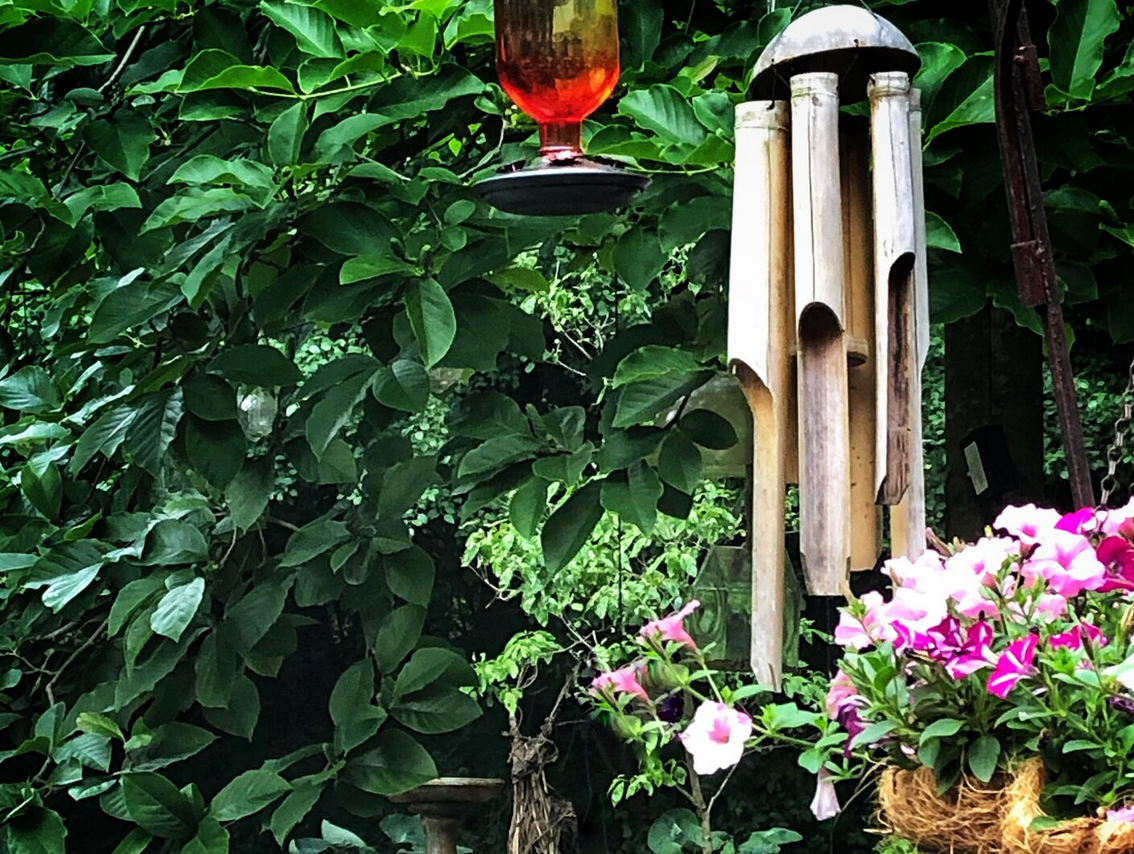
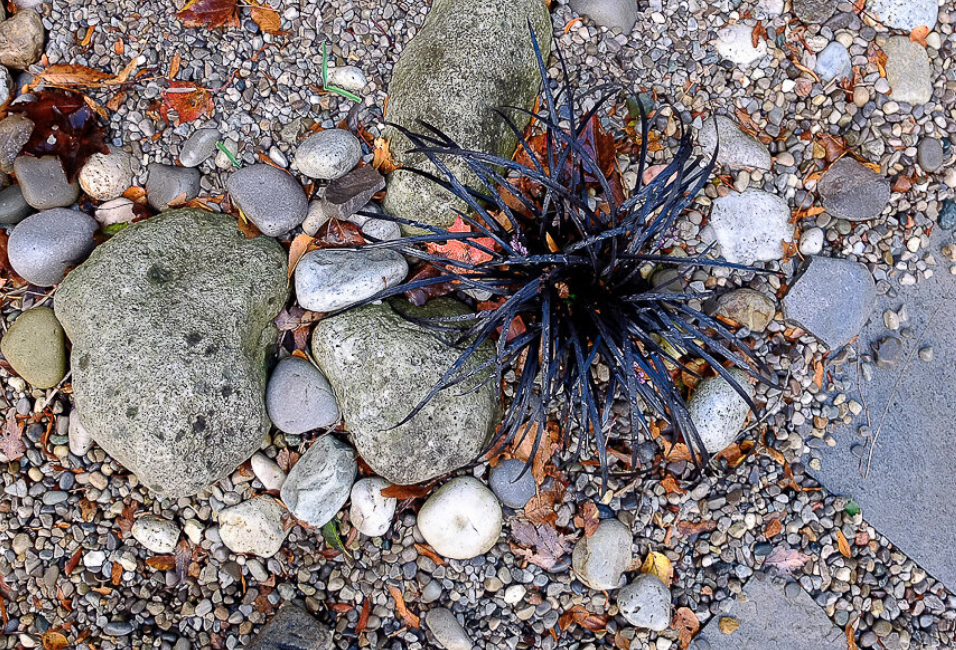
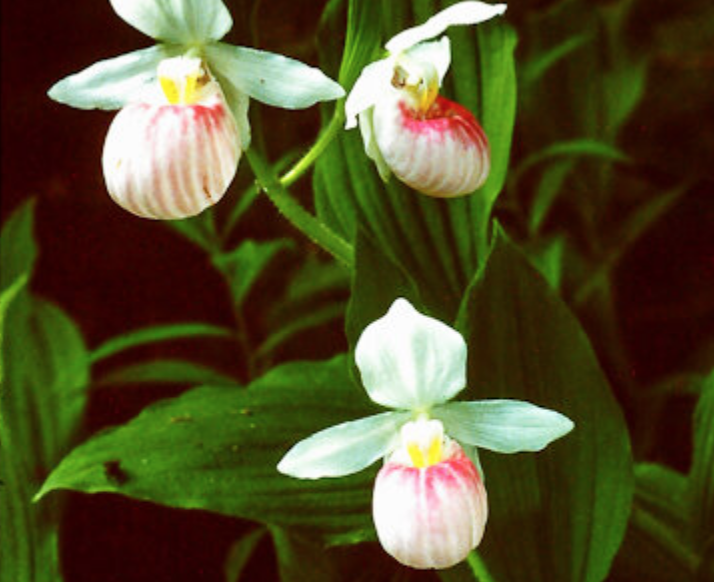


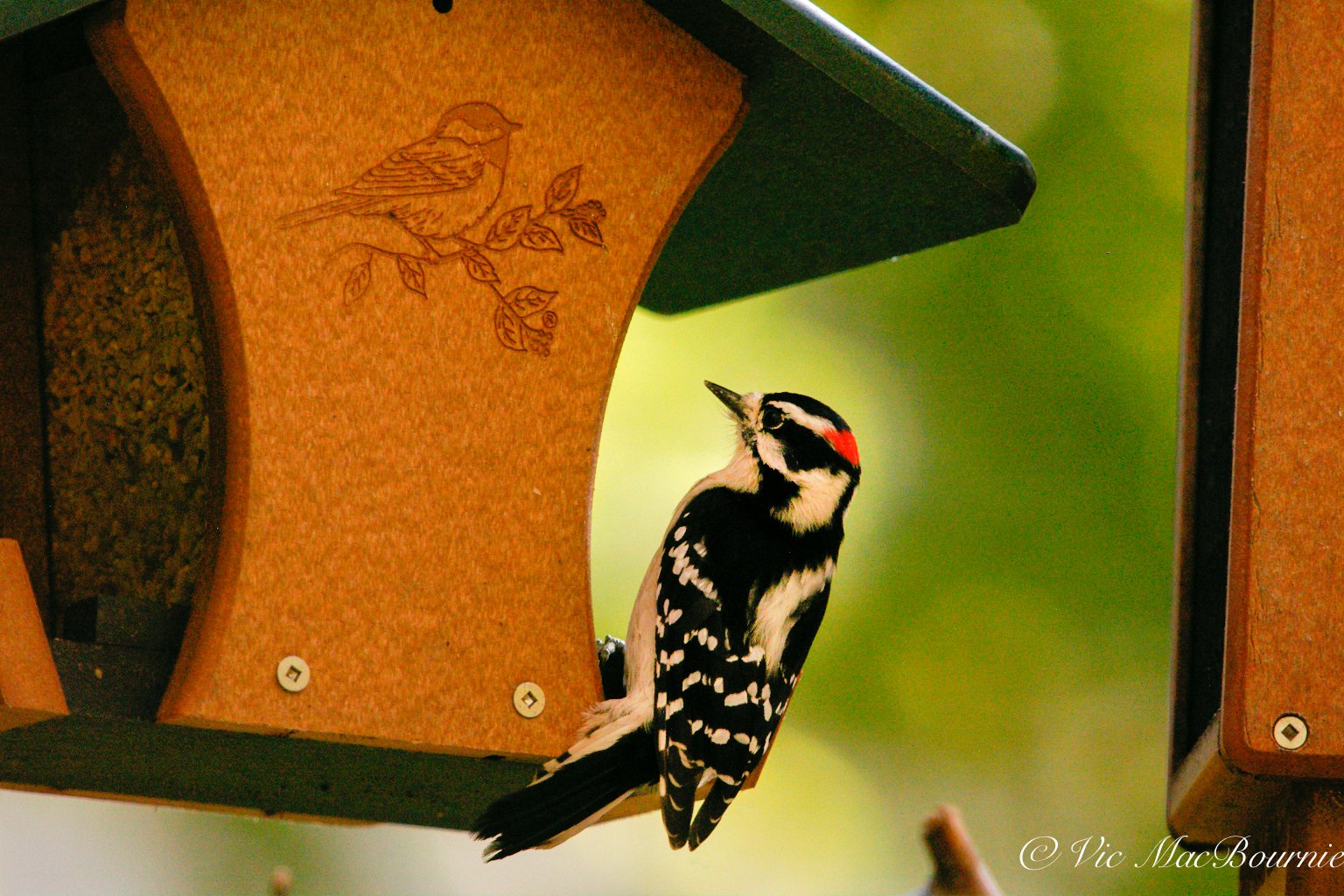
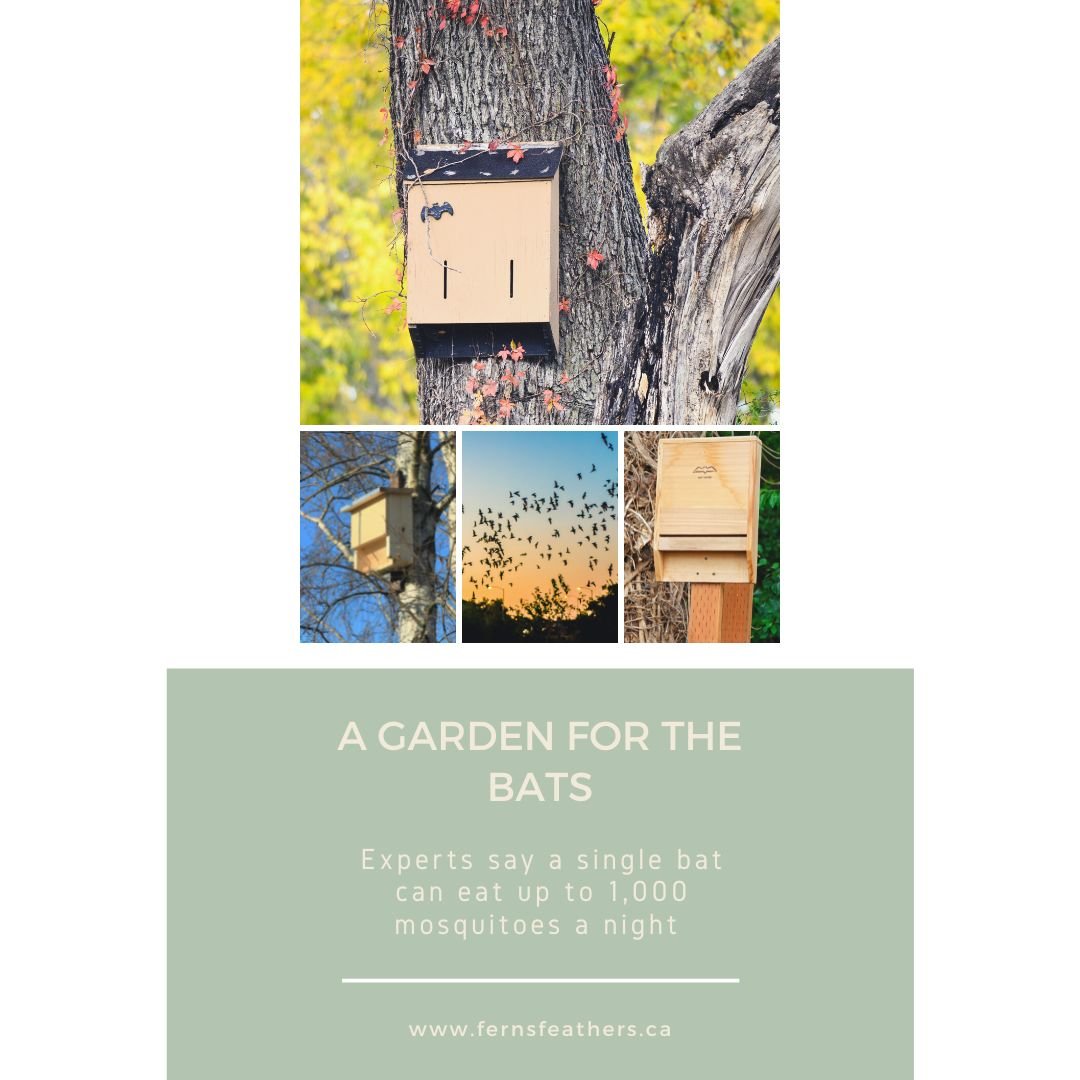
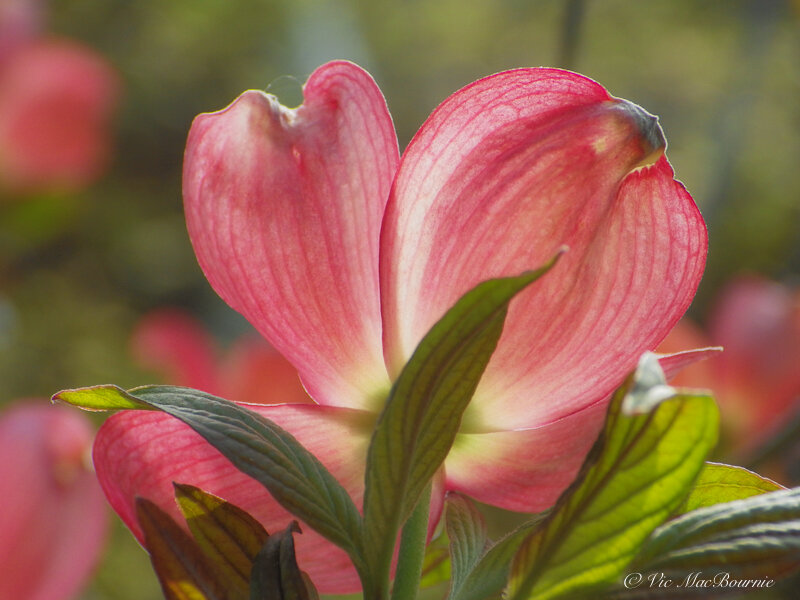


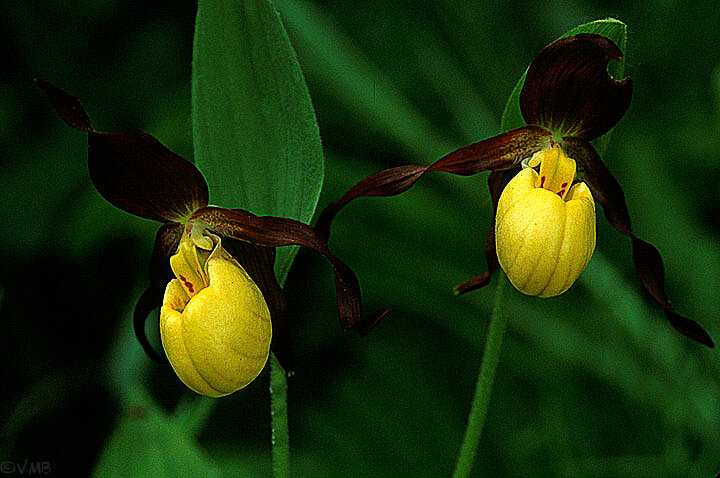
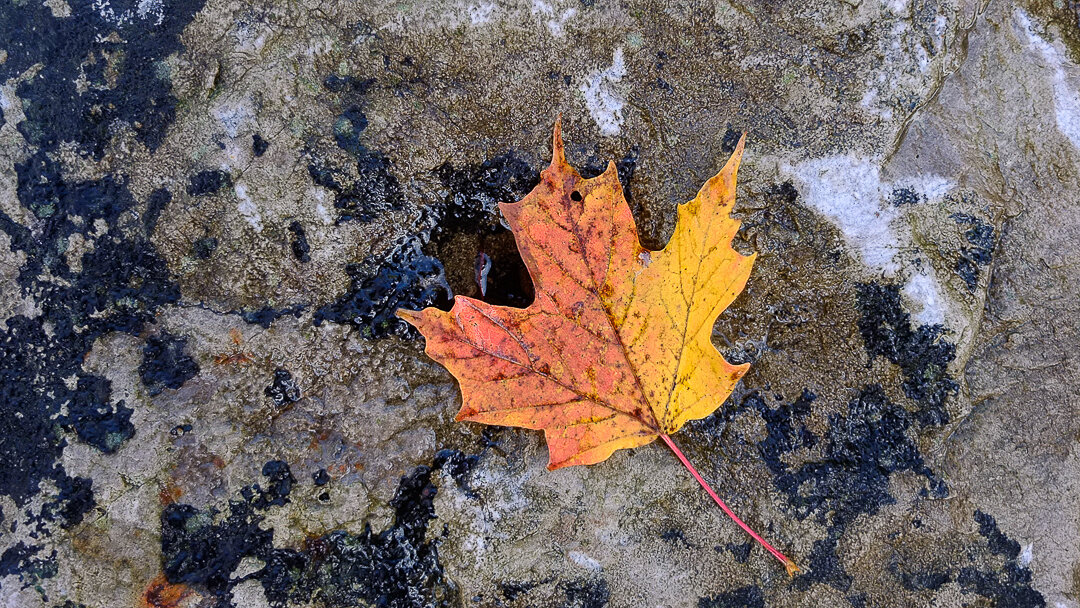
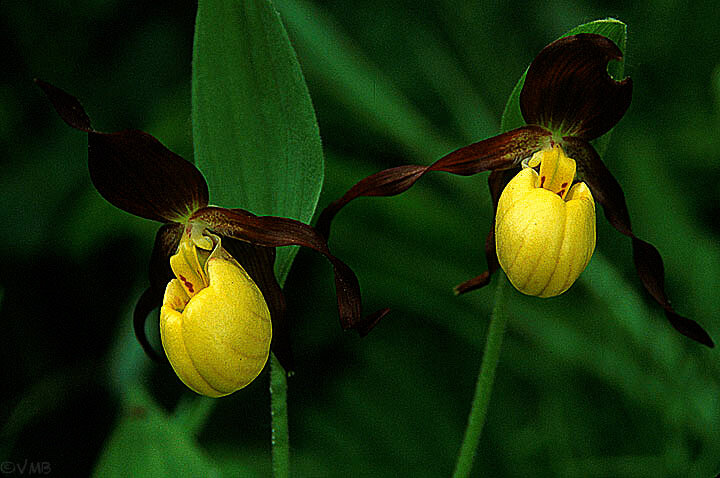


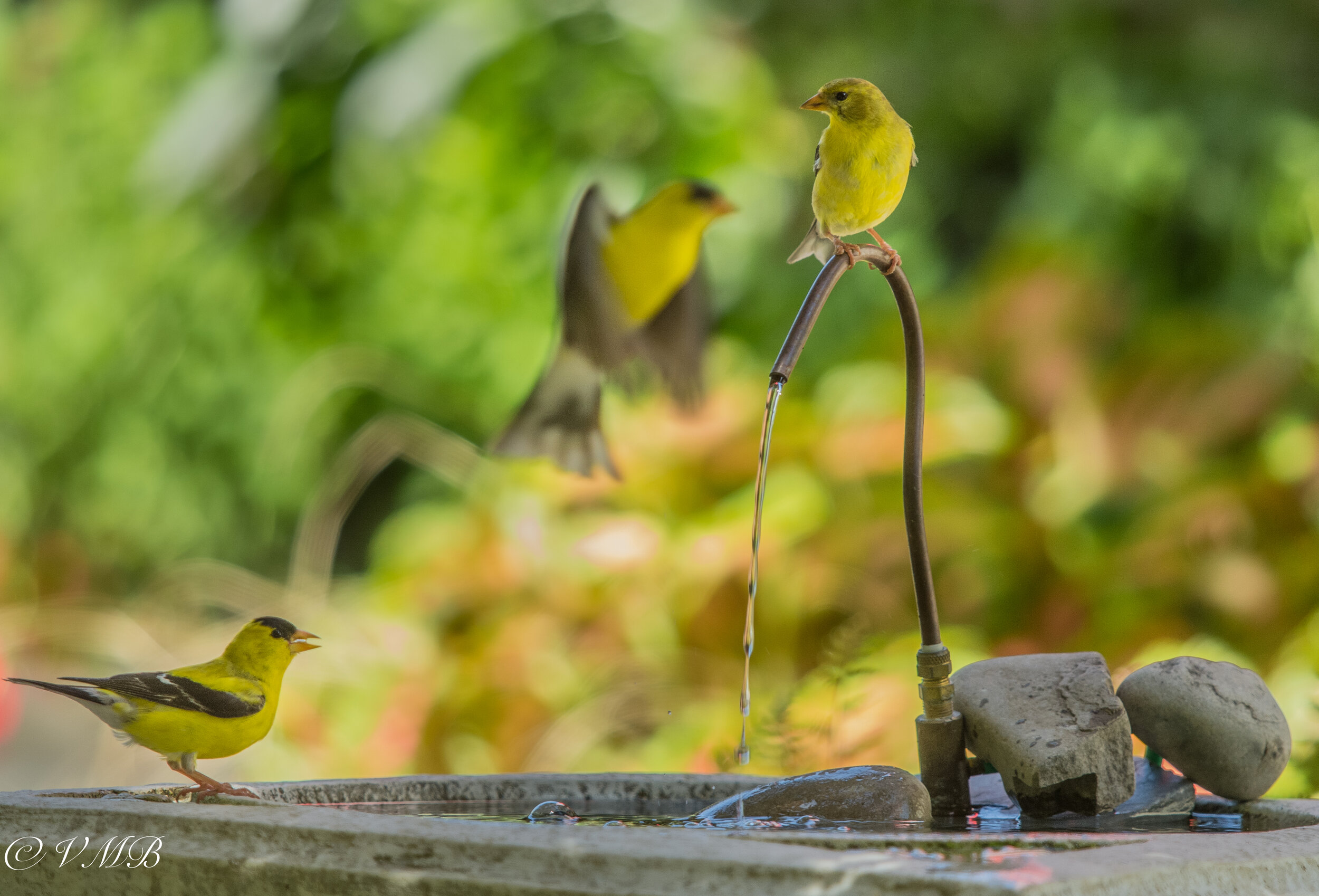
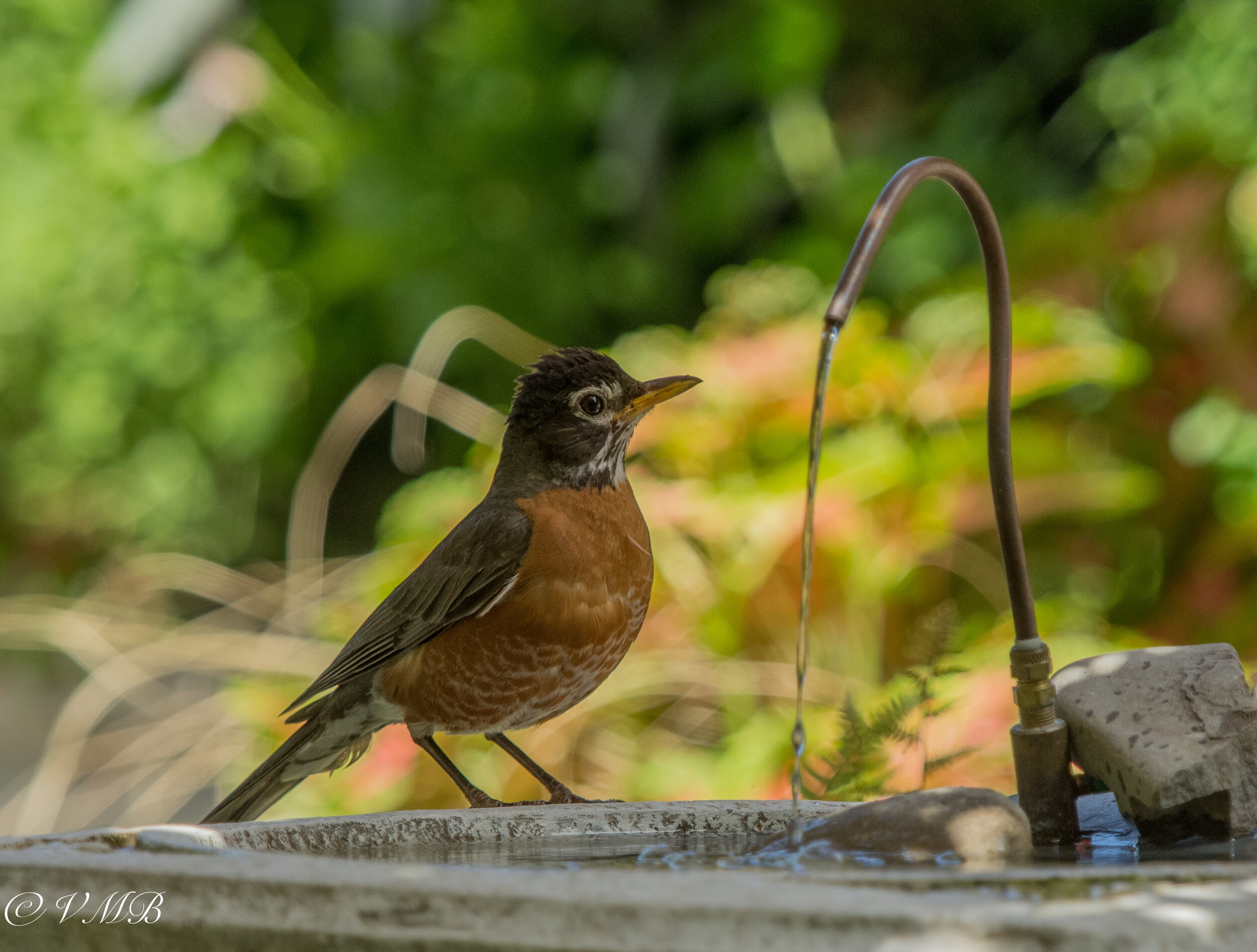
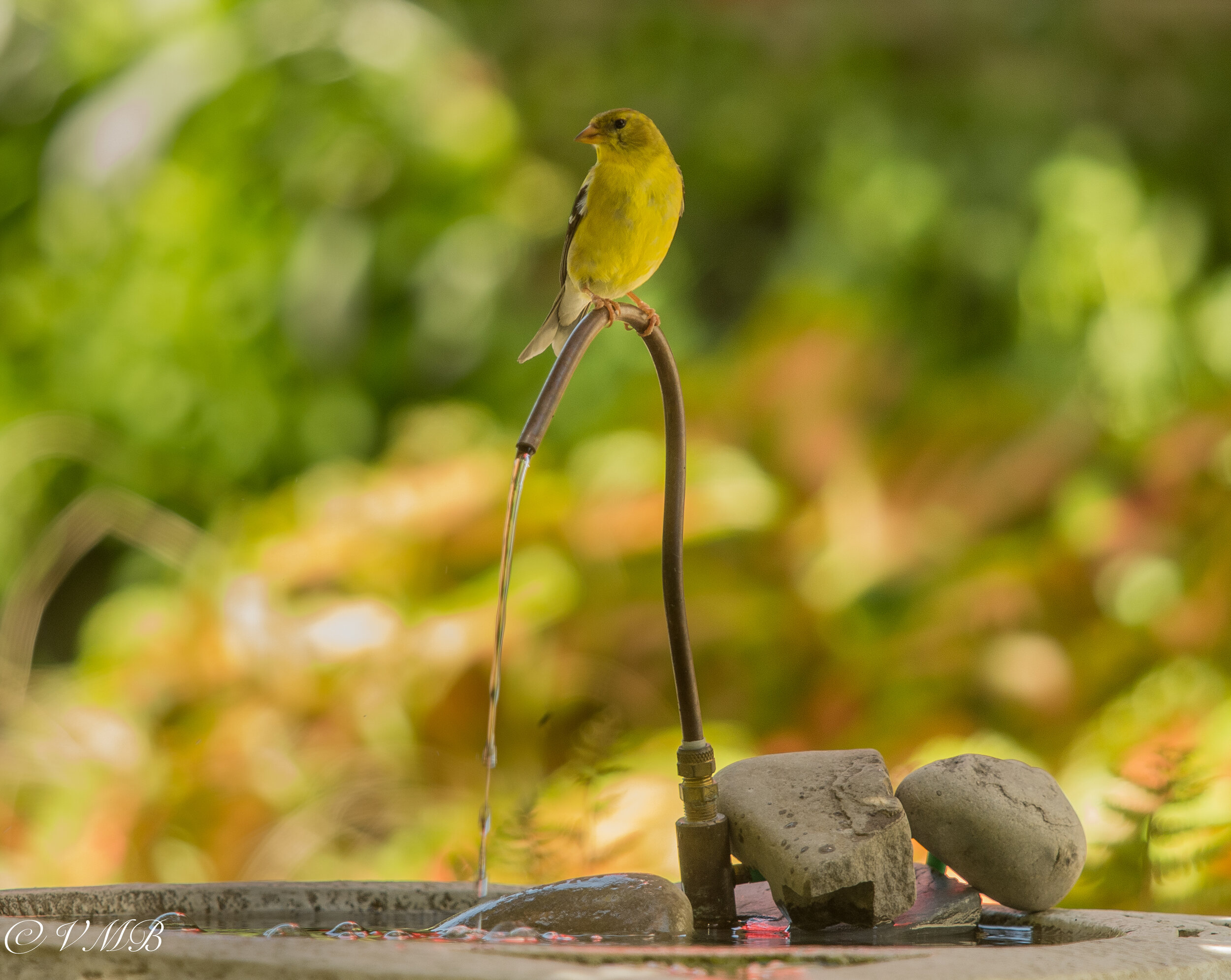
Adding a few native plants to your garden every year will go a long way to building the landscape of your dreams.